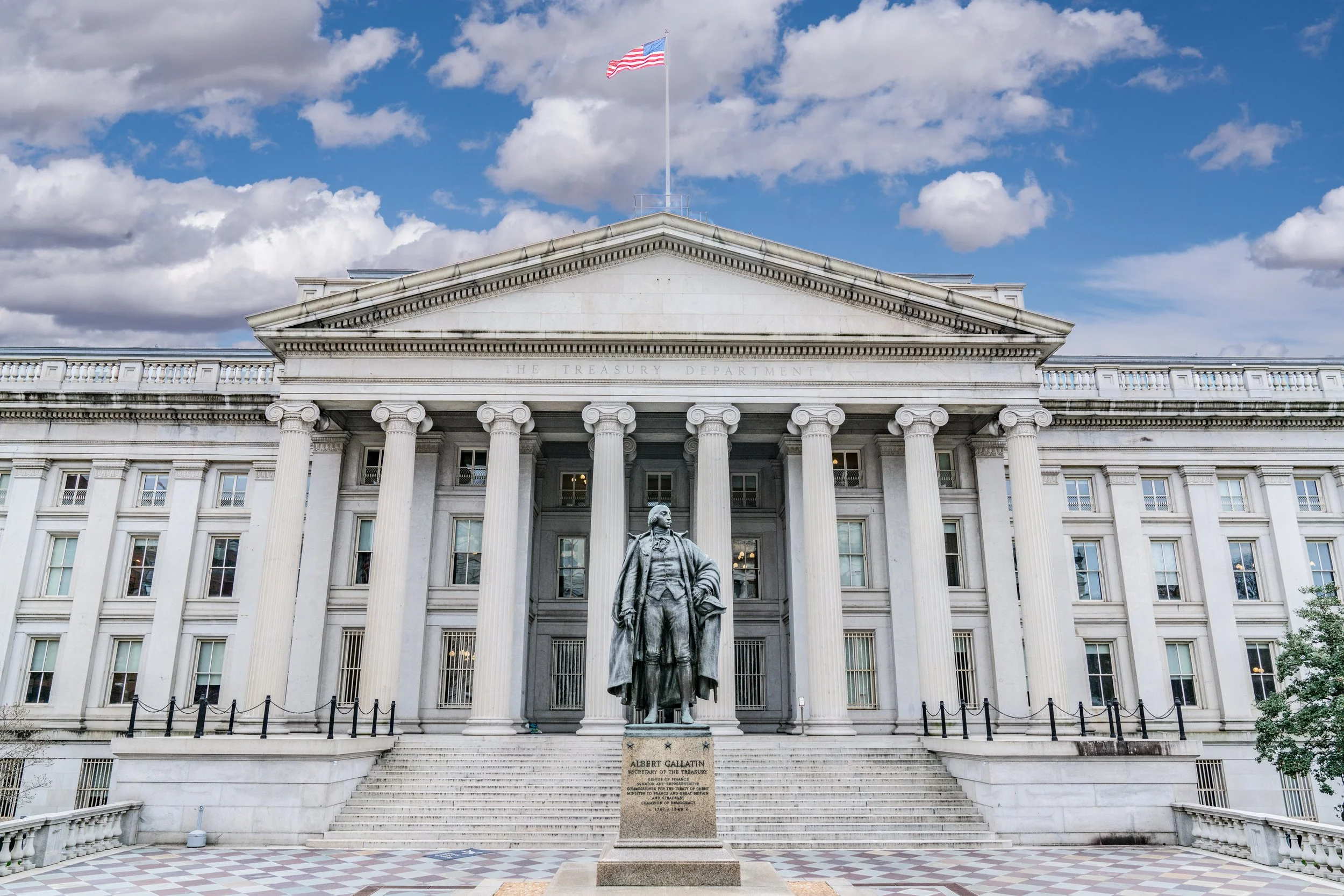PWBM estimates that the Wyden-Smith tax proposal (H.R. 7024) would reduce revenues by $3 billion over the next decade on a conventional basis.
How Does Accounting for Population Change Affect Estimates of the Effect of Immigration Policies on the Federal Budget?
We report estimates from the Penn Wharton Budget Model (PWBM) that exempting employment-based green cards from statutory limits for applicants (and their families) who have earned a doctoral or master’s degree in a STEM field---similar to Section 80303 in H.R. 4521---would reduce federal budget deficits by $129 billion from 2025 to 2034. In contrast, a conventional budget estimate, which would include projected increases in federal spending but not the effect of a larger population on federal tax revenues, shows an increase in federal deficits of $4 billion.
Budgetary Effects of Granting Green Cards to Immigrants with Advanced STEM Degrees
PWBM estimates that exempting from immigrants with advanced STEM degrees from numerical limitations on green cards would reduce deficits by $129 billion over the 2025-2034 period and by $634 billion over the 2035-2044 period.
Explaining the Rise in Prime Age Women’s Employment
The economic costs of the COVID-19 pandemic were widely expected to fall disproportionally on women. Instead, the employment rate of prime age women recovered faster than men’s and rose to its highest point in U.S. history in 2023. We show that the resilience of women’s employment is driven by two long-term trends that predate the pandemic and continued through it: 1) the growing share of women who are college graduates, and 2) the rising labor force participation of college-educated mothers with young children.
Why are Changes to IRS Funding Always Scored as Increasing the Deficit?
The House of Representatives is considering legislation that would rescind $14.3 billion of IRS funding as a budgetary offset for a package that provides aid to Israel. CBO estimates that the decrease in IRS funding alone would reduce revenue by $26.8 billion over 10 years, increasing the deficit by $12.5 billion. Due to scoring conventions, CBO’s projected deficit increase could not be reversed for any future legislation that adds the $14.3 billion in funding back to the IRS.
Pillar Two and the U.S.: A Policy Explainer for Navigating the Global Minimum Tax
The OECD expects countries to implement components of Pillar Two, its framework for a global minimum tax, starting in 2024. The US is likely to cede tax rights to foreign jurisdictions if it does not enact new tax law. Pillar Two will likely reshape the nature of tax competition between countries, incentivizing greater use of subsidies and refundable tax credits to counteract higher statutory rates.
W2023-1 Pillar Two and the U.S.: A Policy Explainer for Navigating the Global Minimum Tax
Author: Lysle Boller
Did Tax Cuts and Jobs Act of 2017 Increase Revenue on US Corporations’ Foreign Income?
Despite a complete overhaul of the US system of international corporate taxation in the Tax Cuts and Jobs Act of 2017, taxes on US corporations’ foreign income are about the same after the law’s enactment as before.
When Does Federal Debt Reach Unsustainable Levels?
PWBM estimates that---even under myopic expectations---financial markets cannot sustain more than the next 20 years of accumulated deficits projected under current U.S. fiscal policy. Forward-looking financial markets are, therefore, effectively betting that future fiscal policy will provide substantial corrective measures ahead of time. If financial markets started to believe otherwise, debt dynamics would “unravel” and become unsustainable much sooner.
A Wide Range of Policy Bundles Can Stabilize Federal Debt while Growing the Economy
Debt ceiling debates would become less frequent if Congress adopted fiscal measures that limited the growth of federal government debt relative to the size of the economy. Without changes in fiscal policy, we project that the debt-to-GDP ratio will grow from 100 percent in 2024 to 190 percent in 2050. Contrary to conventional thinking, there exists a wide range of policy options that can reduce the growth of debt while growing the economy.
Income-Driven Repayment Plans: Modeling Take-up Rates
Federal student loan borrowers can currently choose between several repayment options. When estimating program costs, government agencies have considered several different behavioral repayment models. We find that the most financially savvy rule – where borrowers select the repayment option that minimizes the present value of their future repayments – best explains current borrower choices among repayment options that exist prior to the new Income-Driven Repayment Plan (IDR) “SAVE” plan to be implemented in July 2024.
Biden’s New Income-Driven Repayment (“SAVE”) Plan: Budgetary Cost Estimate Update
PWBM estimates that President Biden’s new Income-Driven Repayment Plan (the “SAVE” plan) will cost $475 billion over the 10-year budget window. This estimate includes the Supreme Court’s decision to invalidate President Biden’s Student Loan Forgiveness Plan and the Department of Education’s final regulations announced on July 10, 2023.
The Build It in America Act: Budgetary and Macroeconomic Effects of Title I
PWBM estimates that Title I of the Build It in America Act would add $76 billion to the budget deficit over the next decade and reduce deficits by $18 billion during the subsequent second decade. It would temporarily boost business investment and GDP during the next two years while lowering GDP in subsequent years. If lawmakers made the extensions permanent, the budgetary cost would rise to $1.25 trillion over the next two decades and GDP would largely remain unchanged, as the tax incentive effects and debt effects mostly offset.
Budgetary Effect of “SAVE Students Act”
PWBM estimates that “SAVE Students Act” would cost about $276 billion less over the 10-year budget window relative to the Income-Driven Repayment (IDR) plan proposed by President Biden.
The Tax Cuts for Working Families Act: Estimated Budgetary and Distributional Effects
PWBM estimates the Tax Cuts for Working Families Act would reduce federal revenues by $96 billion over a decade, cutting taxes for a majority of households in 2024. Households in the bottom quintile households, and those in the top 1 percent, generally would not benefit. As an illustration, we also consider making the provisions permanent, which raises the estimated ten-year budget cost to be between $419 billion and $527 billion.
The Fiscal Responsibility Act of 2023: Budget Cost Estimates of the Debt Ceiling Agreement
We estimate the Fiscal Responsibility Act (“FRA”) of 2023 will reduce noninterest spending by $1.3 trillion over the 10-year budget window using standard scoring assumptions. If discretionary spending in Fiscal Year 2026, after sequestration is no longer in effect, deviates from standard scoring assumptions, the spending reduction could be as low as $234 billion or as high as $1.8 trillion.
Why the Debt Ceiling Deadline is Closer Than Previously Expected
The deadline to raise the nation’s debt ceiling is closer than previously thought because tax receipts in April fell below projections. PWBM estimates that receipts are running $150 billion below government projections for fiscal year 2023, most likely due to a decline in capital gains income and weakening corporate profit margins.
The Long-Term Budget Effects of Permanently Extending the 2017 Tax Cuts and Jobs Act’s Expiring Provisions
Several revenue and spending provisions in The Tax Cuts and Jobs Act (TCJA) are scheduled to expire (“sunset”) by the end of 2025. We estimate that “extenders” (“no sunset”) would increase the federal debt held by the public from 226.0 percent of GDP to 261.1 percent of GDP by 2050.
President Biden’s Proposal to Extend the Medicare Trust Fund
PWBM estimates that President Biden’s new Medicare proposal would increase the solvency of the Medicare trust fund from the year 2028 to 2053. However, a significant share of that increase comes from redirecting existing (current law) revenue to the trust fund. Another portion comes from unspecific expenditure reductions that lack the details required to score. Counting only new income without unspecified expenditure reductions, we project, as an illustrative alternative, that the HI trust fund would remain solvent until 2037.
The Excise Tax on Stock Repurchases: Effects on Shareholder Tax Burdens and Federal Revenues
President Biden has proposed raising the current excise tax rate on stock repurchases from 1 percent to 4 percent. We estimate that, for domestic shareholders, this tax increase would eliminate about 85 percent of the current-law tax preference for dividends over stock repurchases.


















